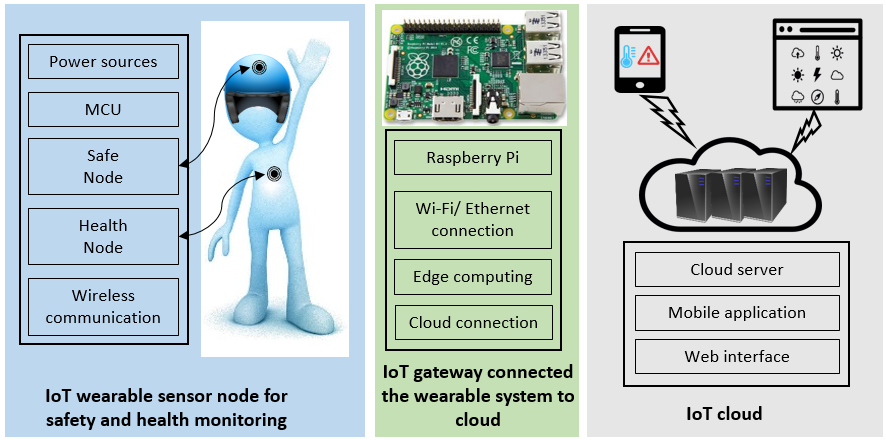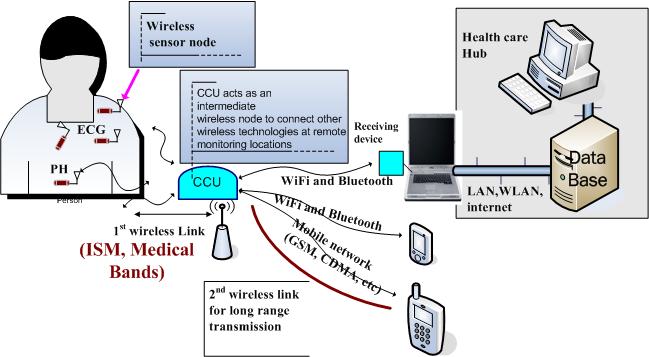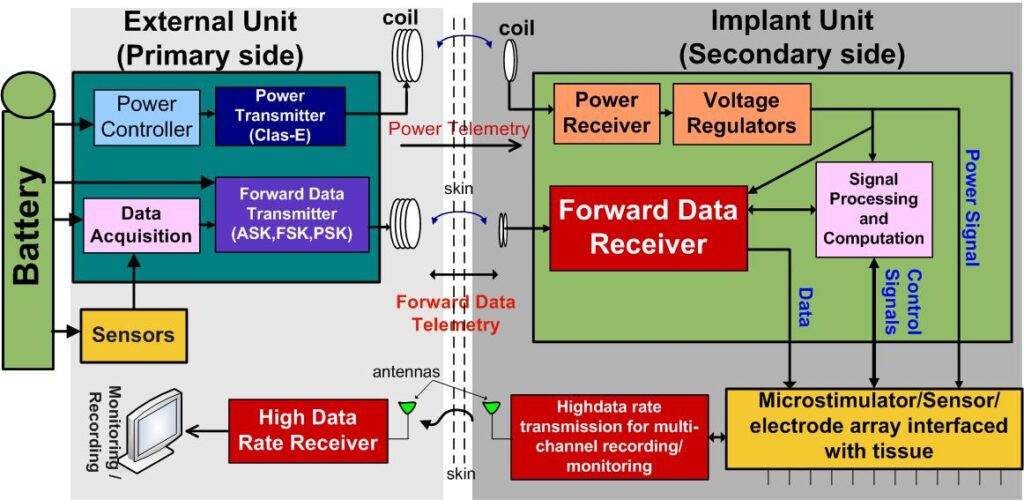Onging Research

Internet-of-Things Platforms: Hardware Solutions
We are working on hardware, software and cloud computing solutions for better implementations of Internet of Things (IoT) technology for various applications. We develop low-power sensor nodes with energy harvesting to enable autunomous and continous monitoring of important things in our daily envirnment. We investigate low-power circuit techniques to design small IoT sensor nodes, efficient electronics design for power manegement and energy harvesting, new sensing mechanisms and new communication network methods for data transmissions and collections in IoT platforms. Our targeted applicatios are healtcare, safety, environmental and infrastructure monitoring.

Wireless e-Health, Wearable Sensors, Wireless Body Area Network (WBAN), IoT (Internet-of-Things) for Healthcare
Our goal is to develop miniaturized and wearable sensor node devices to form a wireless body area network (i.e. IoT platforms) to monitor physiological parameters from the human body or patients anywere and anytime. The project targets both implanted and on-body (i.e. external) nodes. The system consists of individual wireless sensor nodes that can transfer a person’s physiological data such as heart rate, blood pressure, ECG via a wireless link, without the need of any wired connection on the body. Each sensor will have wireless capability and its design is optimized in terms of the physical characteristics of the physiological signal. The sensor nodes use a dedicated wireless link to eliminate the strong interference from other telecommunication devices in healthcare area as reliable communication and accurate monitoring are very crucial for patients lives.

Bioelectronics, Wireless Telemetry, Implantable Device Design
This project conducts research in bio-electronics to extend the performance, to reduce the power consumption and to improve reliability of future implantable electronic and lab-on-a chip biomedical devices. Our targeted system is given below. We design and develop electronics for an implantable system depicted in this figure. We also develop highly efficient and long distance power transfer, high data rate wireles telemetry circuits and optimised electronics sub-block for a miniaturised implantable system. Our ultimate goal is to come up with new biosensing and circuit techniques to make electronics very small so that they can be implantable easily.